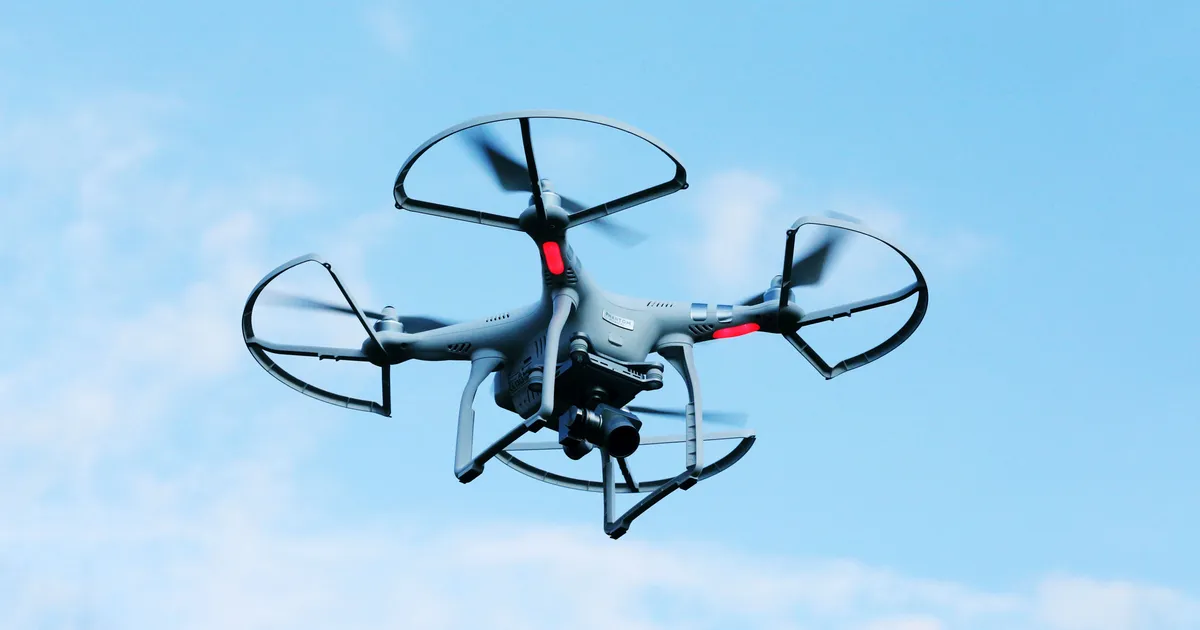From filmmaking to parcel delivery, drones are becoming more advanced with every passing day. While most people have heard a lot about drones and their impact, however, not everyone understands the specifics about drone technology and how drones work.
So today, let’s look at drone technology, how drones work, and how you fly them.
How Do Drones Work?
The FAA defines drones—or unmanned aerial vehicles (UAVs)—as any aircraft system without a flight crew onboard. As such, drones can range in size from large military drones to smaller drones, like the DJI Mavic Pro 2, that you might see being used to film video or inspect a property. The defining trait of a UAV is that it is unmanned.

Drones come in two main types: fixed-wing and rotary. Fixed-wing platforms are exactly as they sound: the wings are fixed to the fuselage (body of the aircraft). For example, the Boeing 737 is a fixed-wing commercial jet: the wings are attached to the fuselage and they cannot move. On a fixed-wing platform, the aircraft flies forward to push the wings through the air to generate lift.
Rotary platform configurations are very different from fixed-wing platform configurations. A rotary platform has a rotary wing (i.e., a propeller) that is fixed to a motor. On a rotary platform, the motor spins the rotary wing against the air to create lift.

One of the most common types of rotary drones is called a quadcopter. A quadcopter, like the Mavic Pro 2 we referred to before, has four motors and four propellers.

How Do Drones Fly?
This video will explain in detail how a drone physically flies through the air:

Because quadcopters are so popular, we will use them as our primary example to explain how drones fly.
When a quadcopter flies, the motors spin the propellers and the propellers PUSH against the air molecules to move the drone. Think about swimming…how do you move forward? You cup your hand and use it to push (or pull, depending on how you look at it) against the water, which moves your body forward. The process is not that different from how a drone flies.
As the propellers spin, they push the air molecules downward, which pulls the drone upwards. Once the drone is flying, it is able to move forward, back, left, and right by spinning each of the 4 propellers at a different speed.
How to Fly a Drone

Drones are flown using a flight controller. Put simply, the flight controller is the “brains” of the drone. It takes in information sent to it by the remote controller, GPS, obstacle avoidance sensors, and other components and then sends signals to the motors to properly respond to the information.

For instance, if you were flying a drone and pushed forward on the control stick, you would be sending a signal to the flight controller to move the drone forward. If this were a GPS drone (in GPS mode), you would effectively be telling the flight computer to move the drone to a GPS location further in front of where it is now.
The flight controller would check with the GPS to gather information, then fire up the rear motors (if on a quadcopter) to move the drone in a forward direction.
More on Drone Technology
Although the remote pilot is responsible for flying the drone, many drones come with built-in technology to make flying easier.
One of the main features of commercial drones today is obstacle avoidance. Using a series of sensors that allow the drone to detect obstacles in multiple directions, the drone will alert the pilot that there is an obstacle in the way of the flight path. If the pilot flies the drone too close to the obstacle, the drone will typically stop and hover in place until the pilot directs the drone around or away from the obstacle. If the battery power level gets too low the drone will also utilize the sensors to find a safe place to land.
Drone technology is not just flight-related—many drones are outfitted with special equipment to conduct a particular task.
For example, drones used in video and photography not only possess high-end cameras but also have special devices called “gimbals” that help hold the camera in place while the drone moves in various directions. With the help of the gimbal, pilots can take smooth aerial shots that you may see in commercials or films.
More Drone Knowledge
Although drones are easier to fly than ever before, it is still important to understand how drones work and the specific types of drone technology your drone utilizes so that you can make the most of each flight.
We offer a range of online drone courses and we recently created a Drones 101 Course to help you really dive into the world of drones. Better yet, the course is 50% off for those that access the course through this article. Spread over nine lessons and containing over an hour and twenty minutes of video, it covers basic flying maneuvers, a more in-depth analysis of drone technology, and a high-level overview of the drone industry at large.
We also have an FAA Part 107 course to help you become a certificated drone pilot.
Or, if you’re looking to buy your first drone, check out our three favorite drones under $100!
Happy Flying!
